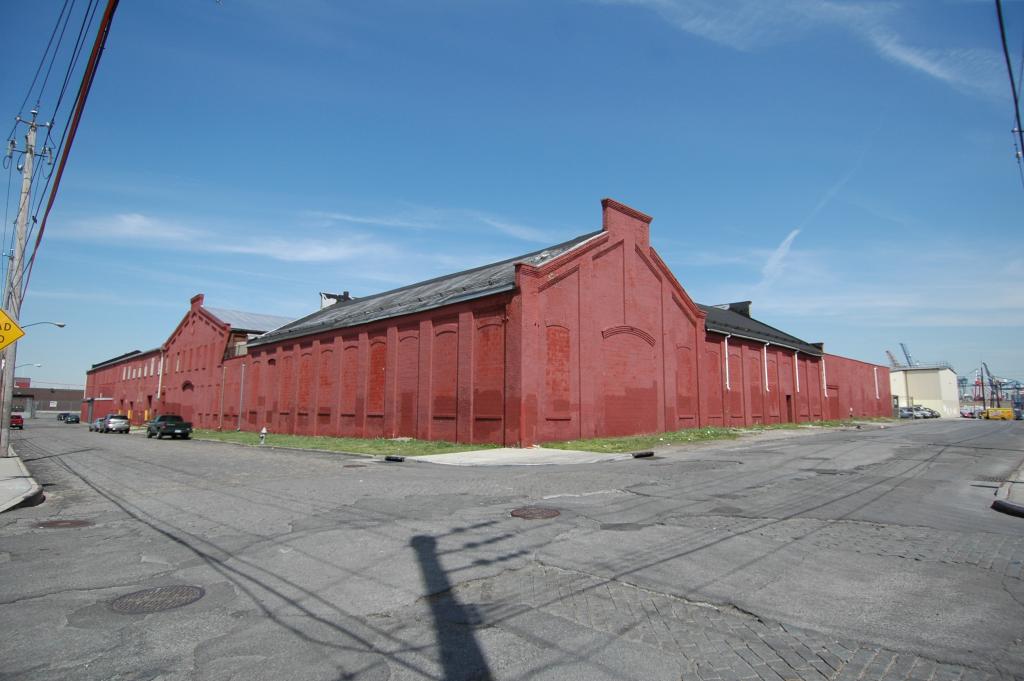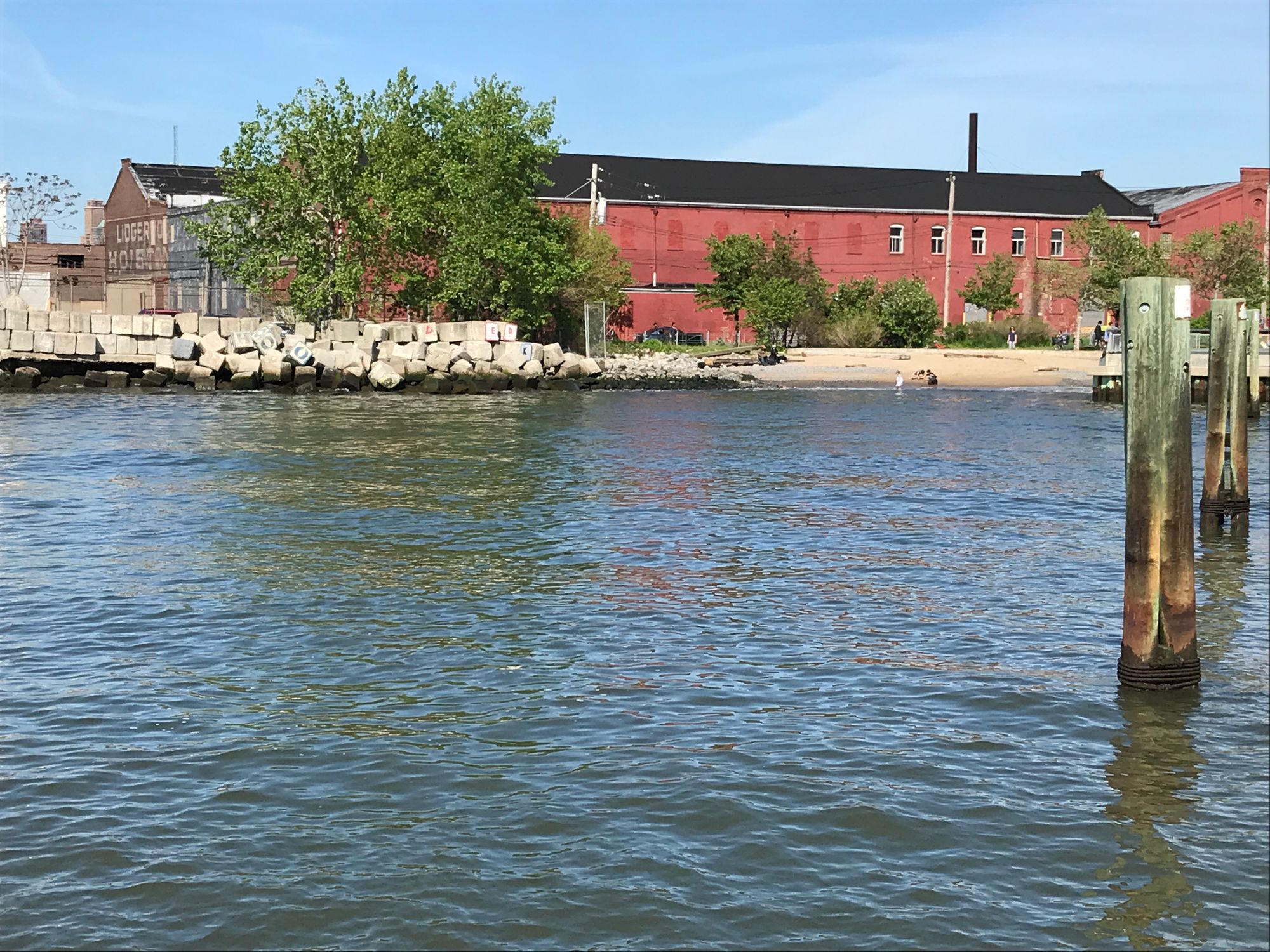UPS Demolishes Red Hook Building Despite Community Protests

[UPDATE: Wednesday, May 29, 2019 at 10am] Carolina Salguero informed Bklyner that “a small portion” of The Lidgerwood Building was demolished on Friday, May 24. She said activists were able to stop the work Friday afternoon “due to non-compliance with permits,” however demolition resumed on Tuesday, May 28.
RED HOOK – Despite pleas from neighbors hoping to preserve The Lidgerwood Building at 202 Coffey Street, UPS went ahead and demolished the structure last Friday, just ahead of the holiday weekend.

Crews began bulldozing the building on May 24, only hours after a UPS spokesperson told the Brooklyn Daily Eagle that the company would consider the community’s requests to preserve parts of the former factory’s façade.
More than 1,800 locals signed an online petition to save the building. “The Lidgerwood Building, located at 202 Coffey Street is slated for demolition…” the petition reads. “This represents (typical) commercial development that doesn’t take into account historical character and threatens to destroy our beloved Red Hook fabric. The Red Hook community has a deep historical character and these buildings represent an iconic part of our neighborhood.”
Adjacent to Louis Valentino, Jr. Park & Pier, The Lidgerwood Manufacturing Building was built in 1882 by architect J.V. Beekman as a foundry where engines and boilers were produced, according to Forgotten New York.
Back in 2017, UPS announced plans to open a new distribution center at the 12-acre site which, along with 202 Coffey Street, includes 242 Coffey, 219 Sullivan Street, and 68 and 100 Ferris Street. An Italian firm previously planned to develop the waterfront properties into the Red Hook Innovation Studios, a creative mixed-use complex, but backed out and sold the site to Sitex in May 2017.
UPS purchased 202 Coffey Street in January 2018 for $37.25 million, according to Property Shark, and the neighboring properties in December 2018, according to Gothamist.
“We, the community of Red Hook, understand that the needs of the future UPS storage may not work with the interior layouts of the historic agglomeration of buildings,” the petition states. “BUT we ask that new developments, and neighbors, take into account the context, history, and community you enter into. This is a small well-knit community that loves the industrial historical fabric that has put us on the map for past decades.”
The petition proposed a compromise to UPS, requesting that the new development (bounded by Coffey, Ferris, and Dikeman Streets) retain the façade(s) facing the park while rebuilding the portion to the north on Dikeman Street. “This allows for history to remain alive AND UPS to find a home that works,” the petition ends.

In an effort to save it from demolition, Brooklyn Community Board 6 penned a letter to the NYC Landmarks Preservation Commission (LPC) asking the agency to evaluate the building and determine if it should be calendared for landmark designation, according to CB6 District Manager, Michael Racioppo. The board also wrote a letter to NYC Department of Buildings (DOB) requesting that the agency not issue permits that would “alter the exterior, or damage the structural integrity” of 202 Coffey Street prior to a decision from LPC.
Last Thursday, May 23, LPC informed Racioppo that 202 Coffey “is currently under review” for landmarking, but on Wednesday, May 22, UPS received a DOB permit for the demolition.
Down in Red Hook, saying goodbye to another irreplaceable piece of Brooklyn’s historic industrial waterfront. The Lidgerwood Manufacturing warehouses, built in the 1880s, are now being demolished, to make way for a UPS facility. pic.twitter.com/vtZR6eOt4P
— Nathan Kensinger (@KensingerNathan) May 26, 2019
Despite Racioppo’s efforts Friday morning to try to halt the demolition, he said DOB informed him that the agency “does not issue such delays until a building is officially calendared” by LPC and crews began razing the structure.
UPS sent CB6 a letter dated May 24 notifying the board that “significant asbestos contamination” and “structural instability” made it necessary to “take down the entire building.” The company notes that it will “integrate elements reminiscent of the Lidgerwood Manufacturing Building into a portion of the exterior façade,” and “preserve as much of the red brick as possible for the façade,” adding that it will seek community input once the design process begins.




